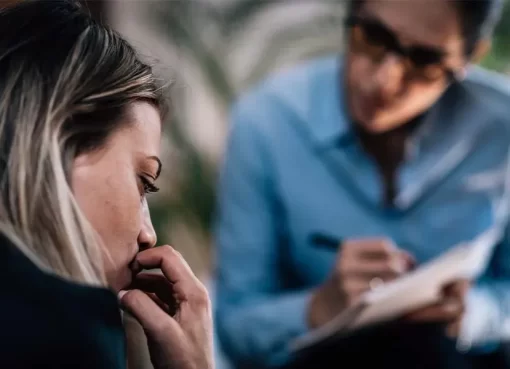The botulinum contagion included in Botox injections generates paralysis. However, if properly administered, these injections can limit the muscles that cause aging lines, such as forehead wrinkles, crow’s feet, and frown lines from contracting. This way, it can stop the aging lines from being apparent, giving the face a smoother, more youthful look. Occasionally, the botulinum toxin can travel to unintended areas when injected, resulting in a droopy and heavy eyelid after Botox.
Cause of Heavy Eyelids after Botox
Botox migrates to one or both of two specific areas, resulting in a droopy eyelid. This condition is known as ptosis. Moreover, the heaviness is caused in the forehead and between the eyes.
1- Forehead
Botox jabbed into the forehead is used to reduce forehead wrinkles, as it prevents the frontalis muscle that raises the eyebrows from contracting and restricting horizontal frown lines from forming. In the majority of the cases, this gives the appearance of a smooth forehead. However, it can cause the brow to drop in some rare cases, crowding the upper eyelids and making them droop.
2- Between the Eyes
Botox can also be injected between the eyebrows or over the brow part to minimize the vertical frown lines that make “11 lines” above your nose. Sometimes, Botox can seep into the upper eyelid and paralyzes the levator palpebrae, the muscle that holds the upper eyelid upright. The upper eyelid will droop when this muscle is paralyzed, giving a heavy eyelid after botox.
Treatment of Heavy Eyelids after Botox
Botox is a temporary solution to aging lines. The treatment can last three to seven months, and the droopy eyelids will typically disappear in four to six weeks. However, you do not have to wait that long as these couple of treatments may help alleviate the problem faster:
- Eyedrops, such as apraclonidine or Iopidine, can help if the eyelids are drooping, but not with the brows.
- More Botox can counteract relaxed eyebrow muscles when injected in the right place.
Most of the time, the droopy eye condition will improve after 3 or 4 weeks or once the neurotoxin wears off, which can be in about 3-4 months or longer. Meanwhile, you can try some at-home treatments that could help your eye to get back to its normal state faster:
Muscle Massage
You should try massaging your eyelid with the back of an electric toothbrush for several minutes a day, as it will stimulate the muscle. You must note that you should not massage the area of the shot until at least a full day has passed.
Eyedrops
Your doctor may prescribe special eyedrops called apraclonidine for tightening your eye muscle. Usually, it is advised to use 1 to 2 drops three times a day.
Preventing Eyelid Droop
You should choose your doctor very carefully to avoid getting any drooping in the first place. It is because eyelid droop mostly happens after a botox when the doctor lacks the proper skills. Thus, it would be best if you got the treatment under the care of a trained doctor.
You should ask for a referral from your regular physician or search for a doctor who is an expert in your condition and gives Botox treatments. The doctor should also be an expert in neurotoxin treatments. Moreover, be sure to tell your doctor if you have had any previous botox treatment in the last 4 months before starting any new treatment. Telling your doctor bout your medications is also very essential, particularly if you take any of the following:
- Muscle relaxants
- Sleep aids
- Blood thinners
- Allergy medicine
Doctors usually ask about your medical history to know if you had any previous facial surgery or a history of Bell’s palsy, as these conditions can make you more susceptible to getting a droopy eyelid. Moreover, your age, sun damage, and lifestyle factors can also impact how your respond to the botox treatment. Therefore, you should mention all of this before going through with the treatment.
Once you are done, you should avoid rubbing or massaging your face for at least 24 hours, as it will help stop the drug from spreading beyond the injected area.
Hence, if you feel that Botox injections suit your needs, make sure you pick a reputable and experienced doctor. It is the only best way to avoid problems like heavy eyelids after botox. If you want more information, you can book an appointment with the best Eye specialist through Marham.



